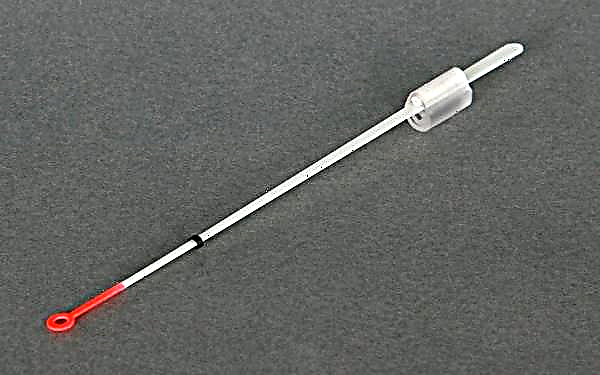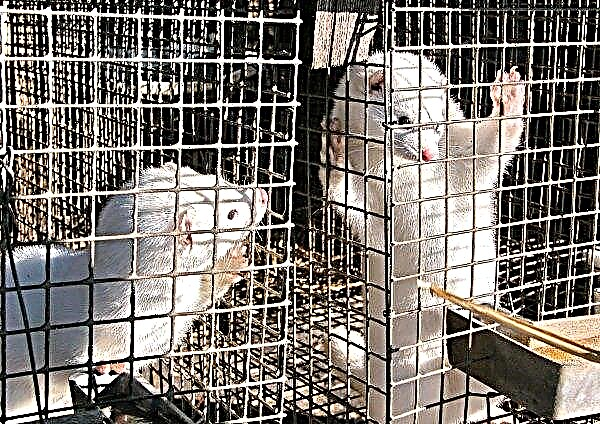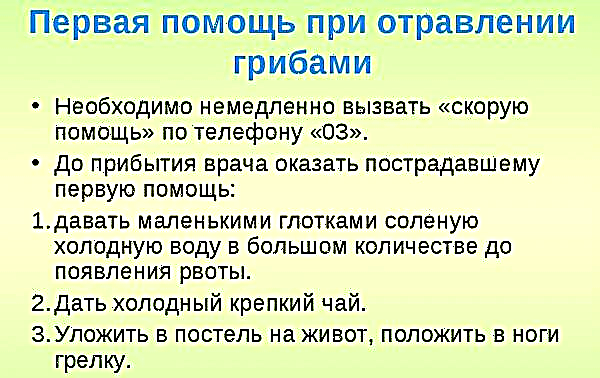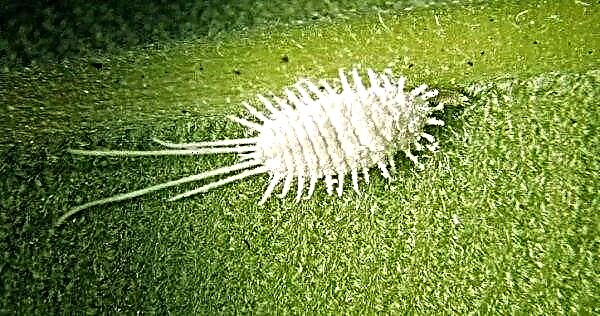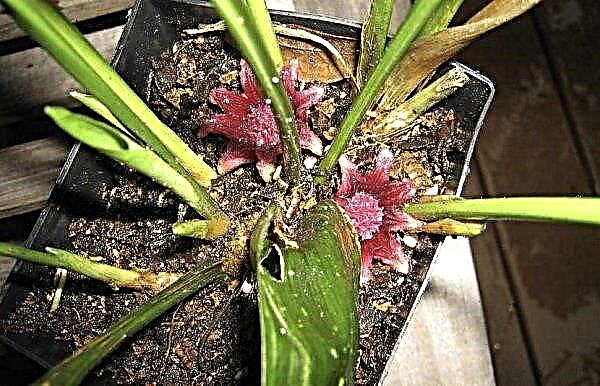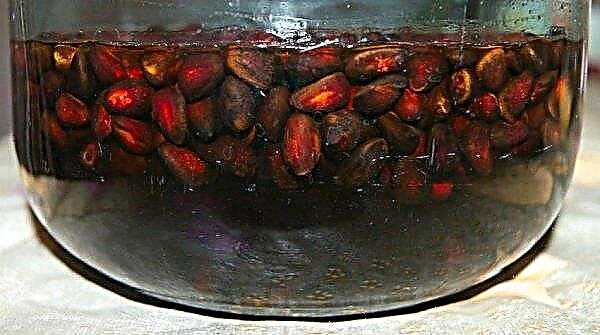Smallpox is common in chickens and quickly takes on the size of an epidemic, causing significant damage to households. Treatment is not carried out in all birds, sick animals are slaughtered, measures are being taken to combat the spread of the virus. We learn about chicken pox, what kind of disease it is, how it spreads, signs and diagnosis, how to deal with it and whether it can be cured.
What is this disease
Chicken pox is a contagious viral disease. It affects mainly parts of the body without feathers (legs, head, mouth and respiratory organs, mucous membranes of the eyes).
History reference
Smallpox was first described in 1775 as contagious conjunctivitis. In 1902, scientists determined that diphtheria and skin lesions are manifestations of the same disease. After a while, the Germans determined its viral origin. In the 30s of the last century, studies divided smallpox in chickens, pigeons and canaries.
Economic damage
Chicken pox is spread all over the world and causes significant damage to poultry farming in many countries. With this disease, there is a strong decrease in bird productivity - egg production is significantly reduced (5 times), hatchability of chicks (dies up to 80%). Sick chickens lose weight, die, their culling occurs. An ill bird has been recovering for a long time. The causative agent of smallpox is very resistant, and the epidemic is often repeated more than once. Quarantine and disinfection take a lot of money.
Sick chickens lose weight, die, their culling occurs. An ill bird has been recovering for a long time. The causative agent of smallpox is very resistant, and the epidemic is often repeated more than once. Quarantine and disinfection take a lot of money.
Before the introduction of these measures in the USSR, up to 30% of the chicken population died from smallpox, but even now this problem is urgent.
Did you know? Holland annually loses from smallpox to 12% of poultry, and the French suffer losses of up to 200 million francs.
Pathogen
Smallpox occurs due to infection with a virus from the Avi poxviridae family, of the genus Avipoxvirus. This viable organism is stored at temperatures up to 38 ° for 8 days, and at temperatures up to 6 ° - up to 8 years.
Minus temperatures contribute to its greater safety. He continues to live on the feathers and feathers of 195 days, on the eggshell - 59 days. The virus dies from the sun in 11 hours and in a few minutes under the influence of acids and alcohol. But in the aquatic environment, he can live for about 66 days.
Sources and routes of infection
Infection can enter the house with a sick or ill bird, including wild, as well as rodents through their stool. The source of infection can also be insects that come into contact with birds, bedding, eggs, food, water, contaminated clothing of workers and various household items in the house that got the infection. Smallpox virus penetrates mucous membranes and skin lesions.
The source of infection can also be insects that come into contact with birds, bedding, eggs, food, water, contaminated clothing of workers and various household items in the house that got the infection. Smallpox virus penetrates mucous membranes and skin lesions.
Important! The crowding and presence of parasites contributes to the spread of this disease. A lack of vitamins exacerbates the course of the disease.
The mechanism of the origin and development of the disease
The causative agent of smallpox, on damage to the epidermis, forms smallpox folliculitis. On the beard and scallop, it forms smallpox exanthema. The course of the disease depends on the state of the immune system of the bird, on the virulence of the strain of the virus.
Vitamin deficiency, metabolic disorders, the presence of secondary microflora exacerbate the course of the disease. It often takes a generalized form when, within 24–48 hours, it is carried by blood to many organs in which, under its influence, dystrophy of parenchymal cells and changes in vascular endothelial cells appear.
A severe lesion of the larynx can clog it, and the bird will die.
Forms and signs
Symptoms of smallpox in chickens depend on the form and severity of the disease. Three forms of smallpox are divided: cutaneous, diphtheria and mixed.
Skin
With this form, in small areas (usually in the head area), starting from 4 days from the virus, smallpox appears. First of all, attention is drawn to the lesions on the catkins, crest, beard, near the eyes and at the beak. They first look like specks of yellowish color, which then turn red and degenerate into warts. They can have a size of up to 0.5 cm, and are covered with scabs. After a few days, they get a brown tint.
They first look like specks of yellowish color, which then turn red and degenerate into warts. They can have a size of up to 0.5 cm, and are covered with scabs. After a few days, they get a brown tint.
The formation of smallpox can take 1-2 weeks, and the disease itself takes about 6 weeks. The skin form has the most favorable prognosis.
Did you know? The mortality rate of chickens with a skin form of the disease is not higher than 8%, and with diphtheria reaches 50%, or even 70% (in the presence of adverse factors). The mixed form usually takes 30-50% of the lives of the inhabitants of the house. Young animals die most of all from smallpox.
Diphtheria
This is the most severe form of smallpox, in which the oral cavity, larynx, trachea and esophagus are affected.
The following symptoms are characteristic of it:
- the presence of ulcers in the oral cavity;
- panting, wheezing, coughing;
- neck extension;
- open beak;
- loss of appetite and refusal of food;
- purulent discharge from the nose;
- purulent swollen lesions around the eyes;
- photophobia;
- swelling of the eyelids and increased lacrimation.

Mixed
This form manifests itself as symptoms of both of the above forms. With it, both the skin and mucous membranes are affected.
Diagnostics
Epizootological and clinical data are collected and analyzed. An autopsy is performed for a dead or sent to slaughter a sick bird. Tests for histological studies and virus isolation, viroscopy, and RBP are taken and conducted.
Important! Symptoms of smallpox are very similar to other diseases that are common in chickens. Hypovitaminosis A, infectious runny nose, laryngitis, tracheitis and bronchitis, scab, aspergillosis, candidiasis, respiratory form of mycoplasmosis, pasteurellosis and others are similar to signs of smallpox disease.
Studies are being conducted to rule out the presence of these diseases. It should be borne in mind that these diseases can occur with smallpox at the same time.
Pathological changes
The most noticeable varying degrees of damage to the skin and mucous membranes. In cut smallpox there is a gray-yellow greasy slurry. Usually the conjunctiva and the eyes themselves are also affected.
Sometimes the disease is localized in the area of the eyes (the infraorbital sinuses) that begin to protrude, or in the walls of the air sacs, esophagus, intestines and stomach. During pathological dissection of chickens who died from the acute course of the disease, severe depletion of birds, an increase in the size of the spleen, pulmonary edema, small foci of yellowish tones in the liver, epicardium and serous membranes contain punctate bloody patches.
During pathological dissection of chickens who died from the acute course of the disease, severe depletion of birds, an increase in the size of the spleen, pulmonary edema, small foci of yellowish tones in the liver, epicardium and serous membranes contain punctate bloody patches.
The intestinal mucosa is loose, stained and may have hemorrhages. With a chronic course of the disease, smallpox may not be detected. But there will be a degeneration of internal organs (liver, kidneys, heart) and an increase in the spleen.
The histology of smallpox shows a thickening of the epidermis. Cells are inflated and contain Bollinger bodies, which are direct confirmation of the disease.
How to treat smallpox in chickens
Rationally treat the skin form with a mild course of the disease. In other cases, chickens are slaughtered. Lesions on the skin are treated with emollient ointments, and sores with one percent iodine-glycerin, a 3-5% solution of chloramine. The nasal cavity and eyes are washed with lukewarm boiled water, and then irrigation is done with a 3% solution of boric acid.
Did you know? Chicken pox patients can infect any poultry belonging to the order of chicken - turkeys, pheasants, quail, guinea fowl. Even ostriches are susceptible to this disease.
Instead of the latter, you can use a solution of chamomile. Potassium iodide is diluted in drinking water. An antibiotic may be prescribed to prevent secondary infections. One of them is Paracillin at a dosage of 1 g per liter of boiled water for a week. The body of birds is strengthened by the intake of vitamins.
Is quarantine necessary in case of mass destruction?
Smallpox is a disease with a persistent pathogen. In the event of a massive chicken pox disease, the farm declares quarantine and is considered unsuccessful. In such an economy, measures are taken according to the current sanitary and veterinary standards for the control of smallpox.
The quarantine regulations are as follows:
- You can not take chickens outside the dysfunctional economy. Only export for slaughter is allowed. In some cases, when the premises and holding areas are well insulated from smallpox prone poultry houses, and the farm has taken all measures to exclude the spread of virus and infection, by decision of the relevant veterinary services it is possible to take out daily chickens to poultry farms and farms within area.
- It is forbidden to take eggs for breeding on a tribe. Sale of eggs is possible after appropriate disinfection.
- Stop importation of a bird that is completely healthy and vaccinated. On dysfunctional farms for smallpox, the whole bird with signs of disease is sent to slaughter on the farm. It is forbidden to export such a bird to meat processing plants. The remaining bird is also recommended to be slaughtered or put to processing. Such export of chickens is allowed subject to all sanitary and veterinary standards. The carcasses of slaughtered birds carry out an appropriate examination. It is only possible to export and sell meat after slaughter by infected smallpox poultry only after heat treatment.
- All healthy birds are vaccinated against smallpox. If after vaccination for 3 weeks the chickens show signs of the virus, then they are sent for slaughter. They vaccinate all poultry against smallpox and on farms in which there is a threat of the appearance of this virus.
- Feather and fluff after slaughter of a disease-susceptible bird are treated with 3% formaldehyde solution and 1% sodium hydroxide solution for one hour. Only after that they can be exported to other enterprises in containers with reinforced double packaging, indicating in veterinary documents that the raw materials are from a dysfunctional economy for smallpox.
- It is necessary to carry out a thorough disinfection of all household premises, equipment and inventory, as well as the entire site according to veterinary standards and recommendations. Chicken manure is treated with biothermal disinfection.
 Quarantine is removed from poultry farms only 60 days after the virus has been completely eradicated and all final disinfection measures have been completed. It will be possible to export the grown chickens to other farms only six months after the end of the quarantine. In the former dysfunctional farms, they have been prevented for 2 years in the form of vaccination of the entire number of chickens. If after 2 years no signs of the onset of the disease have been identified, further vaccination is not required.
Quarantine is removed from poultry farms only 60 days after the virus has been completely eradicated and all final disinfection measures have been completed. It will be possible to export the grown chickens to other farms only six months after the end of the quarantine. In the former dysfunctional farms, they have been prevented for 2 years in the form of vaccination of the entire number of chickens. If after 2 years no signs of the onset of the disease have been identified, further vaccination is not required.Is it dangerous for humans
For a person, smallpox of birds is not dangerous. At the poultry farms, when this diagnosis is detected, the chickens are handed over for slaughter, and the meat is necessarily boiled, only the head is removed. The meat of a severely affected bird is disposed of. Eggs cannot be used for incubation.
For food use, they are suitable after cooking, but usually they are not eaten.
Vaccination
Vaccinations are the most effective measure for the prevention and treatment of birds. They are especially relevant for valuable breeds.
For vaccination, two types of vaccines are used:
- with the presence of chicken virus;
- with the presence of the pigeon virus.
Such drugs are used to develop immunity against smallpox in chickens, chickens, turkeys, ducks. With this vaccination, an injection is made into the membrane located under the wing. Chickens are vaccinated once and for life at the age of 1-3.5 months. Broiler chickens are vaccinated at 28 days. Within 7-10 days at the puncture site during vaccination, a reaction appears in the form of redness and slight edema. She says that the immunization procedure was carried out correctly. Redness and swelling pass within 14-21 days.
Broiler chickens are vaccinated at 28 days. Within 7-10 days at the puncture site during vaccination, a reaction appears in the form of redness and slight edema. She says that the immunization procedure was carried out correctly. Redness and swelling pass within 14-21 days.
Important! You need to buy an effective vaccine and vaccinate correctly. The cause of some smallpox epidemics in chickens is an incorrectly made vaccination. Lack of response to the vaccine in the form of redness will indicate an incorrect vaccination or an unfit vaccine. True, such a lack of reaction may be in already vaccinated individuals.
General preventive measures
To prevent smallpox in chickens, experts recommend taking the following preventive measures:
- air the chicken coop well, but without drafts;
- observe dryness, cleanliness in the room, regularly change the litter;
- carry out timely cleaning and disinfection of the premises, equipment;
- fight rodents, exclude contacts with wild birds;
- make sure that chickens do not stray together;
- disinfect garbage and litter according to existing sanitary and veterinary standards;
- remove quarantine from farms no earlier than 60 days after the removal of smallpox and the final disinfection;
- vaccinate against smallpox of all birds on farms unsuccessful for this disease, for a certain period after the elimination of the epidemic. The same measure is carried out on farms that are in a territory unsuccessful for this disease.
 Smallpox is a contagious disease for birds that cannot always be cured. In farms where it is found, a long quarantine is announced and measures are taken to eliminate it. In most cases, sick chickens and birds in contact with them are sent for slaughter. The best measure against smallpox is vaccination.
Smallpox is a contagious disease for birds that cannot always be cured. In farms where it is found, a long quarantine is announced and measures are taken to eliminate it. In most cases, sick chickens and birds in contact with them are sent for slaughter. The best measure against smallpox is vaccination.

